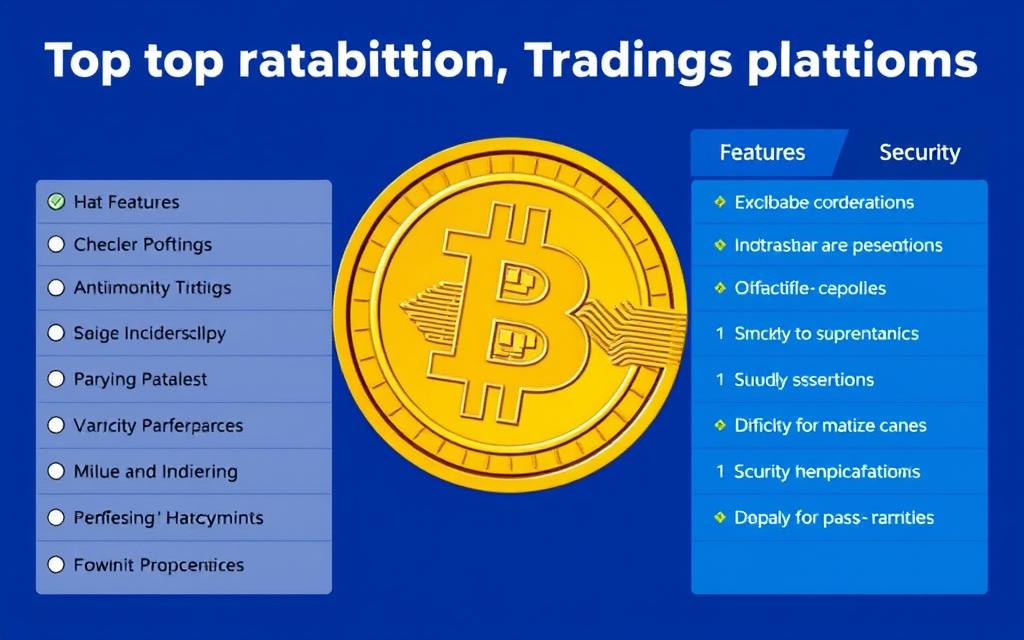Table of Contents
The financial world has been revolutionized by Bitcoin, offering investors and traders new opportunities. With a market capitalization exceeding $1 trillion, Bitcoin remains the leading cryptocurrency.
Investing in Bitcoin can be lucrative, but it comes with significant risks. Understanding the fundamentals is essential before attempting to generate profits. This comprehensive guide will explore various strategies for generating income with Bitcoin, including both passive and active methods.
By examining different approaches, beginners can determine which methods best match their risk tolerance and investment goals. The cryptocurrency market offers unique opportunities for wealth creation that weren’t possible in traditional financial systems.
Understanding Bitcoin as an Investment Opportunity
Bitcoin has emerged as a significant investment opportunity in the digital age, attracting both seasoned investors and newcomers alike. As the pioneer cryptocurrency, Bitcoin offers a unique value proposition that has captured the attention of the financial world.
What Makes Bitcoin Valuable
Bitcoin’s value stems from several key factors. Its limited supply, capped at 21 million coins, combined with its decentralized nature, makes it an attractive store of value. The growing institutional adoption of Bitcoin further enhances its legitimacy as an investment asset. Unlike traditional currencies controlled by central banks, Bitcoin operates on a transparent blockchain, making it resistant to inflation and government manipulation.
- Limited supply and decentralized nature
- Growing institutional adoption
- Transparent blockchain operations
Getting Started with Bitcoin
To start investing in Bitcoin, one must first select a reputable cryptocurrency exchange or platform. It’s crucial to research and understand the various methods of making money with Bitcoin, as well as the associated risks. New investors should prioritize security by understanding wallet options, private keys, and implementing strong authentication measures.
Before diving into the crypto market, consider your financial goals, risk tolerance, and time horizon to determine how Bitcoin fits into your overall investment strategy. The barrier to entry for Bitcoin investment has decreased, allowing investors to start with small amounts and gradually increase their exposure.
Buying and Holding (HODLing) Bitcoin
One of the simplest ways to make money with Bitcoin is by adopting a HODLing strategy, which involves buying Bitcoin and holding it for the long term. This approach is perfect for those new to trading who don’t wish to trade actively, as it eliminates the need for constant market monitoring.

Why HODLing Works as a Strategy
HODLing leverages Bitcoin’s long-term price appreciation potential while minimizing the stress and technical knowledge required for active trading. Despite significant market volatility in the short term, Bitcoin has demonstrated remarkable growth over multi-year periods, rewarding patient investors who withstand temporary downturns.
How to Securely Store Your Bitcoin
Securely storing Bitcoin requires understanding the differences between hot wallets (connected to the internet) and cold storage options like hardware wallets that provide superior security. Popular hardware wallet options include Ledger, Trezor, and KeepKey, which store your private keys offline, protecting them from online threats and hackers.
Dollar-Cost Averaging for Beginners
Dollar-cost averaging (DCA) involves investing fixed amounts at regular intervals regardless of price, reducing the impact of volatility and eliminating the pressure of timing the market perfectly. Setting up automatic recurring purchases on exchanges like Coinbase or Binance simplifies the DCA process and enforces investment discipline regardless of market conditions.
By adopting a HODLing strategy and using hardware wallets to secure your Bitcoin, you can potentially make money through this investment in a relatively straightforward manner.
Trading Bitcoin for Profit

Bitcoin trading offers a chance to capitalize on the cryptocurrency’s fluctuating prices, but it demands a well-thought-out approach. Trading involves engaging in short-term strategies such as day trading, swing trading, or arbitrage to profit from price movements. This approach requires active monitoring of market trends and rapid decision-making.
Day Trading vs. Swing Trading
Day trading involves executing multiple trades within a single day to capitalize on short-term price movements. It requires significant time commitment and quick decision-making. On the other hand, swing trading takes a more moderate approach, holding positions for days or weeks to capture larger market moves, making it more accessible for beginners with limited time.
Essential Trading Tools and Indicators
Successful Bitcoin traders rely on technical analysis tools like candlestick charts, moving averages, and momentum indicators (RSI, MACD) to identify potential entry and exit points. Trading platforms like Binance, Kraken, and Coinbase Pro offer advanced charting capabilities, order types, and relatively low fees for active traders.
Risk Management Strategies
Implementing proper risk management is crucial for trading success. Most professionals recommend risking no more than 1-2% of your trading capital on any single trade. Stop-loss orders automatically sell your position if prices move against you by a predetermined amount, protecting your capital from significant losses.
To make money with Bitcoin through trading, it’s essential to choose a reliable trading platform with low fees and high liquidity. Beginners should consider practicing with paper trading (simulated trading without real money) before committing actual funds to develop strategies and gain confidence.
Mining Bitcoin: Is It Still Worth It?

Bitcoin mining remains a lucrative venture for those willing to invest in the right hardware and navigate the complexities of the process. The process involves using specialized computers to solve complex mathematical problems, thereby verifying transactions on the blockchain and earning Bitcoin rewards.
The Process of Bitcoin Mining
Bitcoin mining involves validating transactions on the blockchain, which requires substantial computational power. Miners use powerful computers, known as ASIC miners, to solve complex mathematical problems. This process not only secures the network but also generates income for miners through the rewards they earn.
Hardware Requirements and Associated Costs
Modern Bitcoin mining requires significant upfront investment in hardware, with professional ASIC miners like the Antminer S19 or Whatsminer M30S costing several thousand dollars each. Additionally, electricity costs represent the most significant ongoing expense for miners, making locations with cheap power essential for profitability.
Cloud Mining as an Alternative
For those who find the hardware investment prohibitive, cloud mining offers an alternative. Companies like Genesis Mining and NiceHash provide mining contracts, eliminating the need for personal equipment and technical expertise. However, potential miners should be cautious of scams and use profitability calculators to determine the viability of their investment.
To maximize profitability, miners should consider factors such as electricity costs, hardware efficiency, and the current Bitcoin price. Joining a mining pool can also help in achieving more consistent payouts. By understanding these elements, individuals can make informed decisions about their involvement in Bitcoin mining.
Earning Passive Income Through Bitcoin Lending
Passive income through Bitcoin lending is an attractive option for those looking to maximize their holdings. By lending Bitcoin, investors can earn interest on their cryptocurrency without having to actively trade it.

Top Lending Platforms Compared
Several platforms offer Bitcoin lending services, each with its own interest rates and terms. Centralized lending platforms like BlockFi, Celsius Network, Nexo, and Binance Earn offer varying annual percentage yields (APY) ranging from 3% to 8%. When comparing these platforms, it’s crucial to consider not just the interest rates but also the security measures, insurance coverage, and regulatory compliance.
For instance, BlockFi is known for its robust security features and transparent terms, while Celsius Network has faced challenges in the past, highlighting the importance of thorough research.
Understanding Risks and Returns
The primary risks associated with Bitcoin lending include platform insolvency, smart contract vulnerabilities in DeFi applications, and potential regulatory changes. Interest rates fluctuate based on market demand for borrowing Bitcoin, typically decreasing during bear markets.
To mitigate these risks, investors should diversify their lending across multiple platforms and consider the terms and conditions carefully. Decentralized finance (DeFi) protocols like Aave and Compound offer alternative lending opportunities with potentially higher returns, but they require more technical knowledge to navigate.
Staking and Yield Farming with Bitcoin
Bitcoin holders can now participate in staking and yield farming, thanks to innovative platforms. This development has opened up new avenues for generating passive income and earn rewards in the crypto space.

Mechanisms of Bitcoin Staking
While Bitcoin itself doesn’t use a proof-of-stake consensus mechanism, several platforms now allow Bitcoin holders to participate in staking-like activities. This is typically achieved through Wrapped Bitcoin (WBTC) or other representations of Bitcoin on smart contract platforms, enabling access to yield-generating opportunities in the DeFi ecosystem.
Bitcoin staking involves depositing your BTC into a platform that converts it into a compatible token for use in various DeFi protocols. The platform handles the technical complexities, making it accessible to a broader range of investors.
DeFi Platforms for Bitcoin Yield
Popular platforms for Bitcoin yield generation include Badger DAO, renBTC, and Thorchain. Each offers different mechanisms for Bitcoin holders to earn rewards and interest on their investments. When selecting a platform, it’s crucial to consider factors such as security, fees, and the potential passive income that can be generated.
Yield farming with Bitcoin involves strategically moving your Bitcoin-based tokens between different DeFi protocols to maximize returns. This often involves providing liquidity to decentralized exchanges, and the annual percentage yields (APY) can range from 3% to over 20%, depending on the platform and market conditions.
As with any investment, there are risks associated with Bitcoin staking and yield farming, including smart contract vulnerabilities and impermanent loss. Beginners should start with more established platforms that prioritize security and have undergone multiple security audits.
How to Make Money with Bitcoin Affiliate Programs

Bitcoin affiliate programs offer a lucrative opportunity to earn cryptocurrency without directly investing in it. Many cryptocurrency exchanges offer affiliate programs that allow you to earn commissions on referred customers. By sharing referral links, you can earn a percentage of the transaction fees they pay.
Top Bitcoin Exchanges with Affiliate Programs
Leading cryptocurrency exchanges like Binance, Coinbase, and Bybit offer some of the most lucrative affiliate programs. Commission rates typically range from 20% to 50% of the trading fees generated by referred users. For instance, the Binance Referral Program is known for its competitive commission rates and extensive marketing support.
Beyond exchanges, hardware wallet manufacturers like Ledger and Trezor, as well as educational platforms, provide affiliate opportunities with varying commission structures.
Marketing Strategies for Crypto Affiliates
Successful crypto affiliates typically create value-added content that educates audiences about Bitcoin while naturally incorporating affiliate links. Content marketing through blogs, YouTube channels, and newsletters allows affiliates to build authority and trust. Social media platforms, particularly Twitter, Reddit, and Telegram groups, provide opportunities to engage with cryptocurrency communities and share affiliate links when relevant and helpful.
Transparency about affiliate relationships is essential for building long-term trust with your audience and complying with disclosure regulations. Tracking tools provided by affiliate programs help marketers understand which content and channels drive the most conversions, allowing for optimization of marketing strategies over time.
Accepting Bitcoin as Payment for Goods and Services
Businesses can now expand their customer base by accepting Bitcoin as a form of payment. This method allows entrepreneurs, freelancers, and established businesses to accumulate cryptocurrency while expanding their customer base.

Setting Up Bitcoin Payment Gateways
To get started, businesses can set up a Bitcoin payment gateway using services like BitPay, OpenNode, or BTCPay Server. These platforms offer varying levels of control, fees, and features, making it easier for merchants to manage their Bitcoin payments.
Self-hosted solutions like BTCPay Server provide maximum control and privacy with no intermediary fees, though they require more technical knowledge to implement and maintain. Hosted solutions like Coinbase Commerce offer simpler setup processes with user-friendly interfaces, making them more accessible for merchants new to cryptocurrency.
Benefits and Challenges for Merchants
Merchants can benefit from lower transaction fees compared to credit card processors, elimination of chargebacks, and access to a global customer base without currency conversion complications. However, they also face challenges such as price volatility between the time of sale and conversion to fiat, potential tax complications requiring careful record-keeping, and the need to educate customers unfamiliar with cryptocurrency payments.
By accepting Bitcoin, businesses can attract crypto users and potentially increase their customer base. Freelancers on platforms like Upwork and Fiverr can also differentiate themselves by accepting Bitcoin for their services.
Bitcoin Faucets and Microtasks: Earning Small Amounts

Earning Bitcoin through faucets and microtasks is an accessible entry point for newcomers. Bitcoin faucets are websites that reward users with small amounts of Bitcoin for completing simple tasks, such as viewing ads or filling out surveys.
How Bitcoin Faucets Work
Bitcoin faucets reward users with satoshis, the smallest unit of Bitcoin, for completing simple actions like viewing advertisements, solving captchas, or playing simple games. Popular Bitcoin faucets include Cointiply, FreeBitcoin, and BonusBitcoin, each with different reward structures and task requirements.
Microtask Platforms That Pay in Bitcoin
Microtask platforms like Microworkers, Picoworkers, and CryptoTab Browser enable users to earn Bitcoin by completing more substantial tasks such as testing websites, writing reviews, or participating in research studies. These platforms provide an opportunity to engage with the cryptocurrency ecosystem while earning rewards.
Maximizing Earnings from Small Tasks
To maximize earnings, users should focus on platforms with lower withdrawal minimums, track hourly earnings across different sites, and use Bitcoin wallets with low transaction fees for withdrawals. Consistent participation is key, as many faucets and microtask sites implement tiered reward systems or loyalty programs that increase earnings over time.
By leveraging Bitcoin faucets and microtask platforms, individuals can accumulate small amounts of cryptocurrency without financial investment, making them ideal starting points for those new to the Bitcoin ecosystem.
Alternative Methods: Airdrops, Forks, and ICOs

Airdrops, forks, and ICOs represent a new frontier in cryptocurrency investment, offering unique opportunities for Bitcoin holders. These alternative methods can enhance a portfolio without additional investment, leveraging existing Bitcoin assets for potential gains.
Finding Legitimate Airdrops and Forks
Participating in airdrops and forks allows Bitcoin holders to receive free tokens based on their existing holdings. Airdrops often distribute new tokens as a marketing strategy, while forks occur when a blockchain splits, creating new assets. To find legitimate airdrops, it’s crucial to conduct thorough research through reputable cryptocurrency news sites, official project announcements, and airdrop aggregator platforms.
Bitcoin holders can qualify for airdrops either directly or indirectly, and it’s essential to be cautious of common scams that request private keys or deposits. By staying informed and vigilant, investors can capitalize on these opportunities and potentially increase their crypto holdings.
Evaluating ICO Opportunities
Initial Coin Offerings (ICOs) and their evolved forms like Initial Exchange Offerings (IEOs) allow early investment in new cryptocurrency projects, potentially at discounted rates before public trading begins. Evaluating ICO opportunities involves thorough research into the project’s team credentials, technological innovation, market need, tokenomics, and legal compliance.
Investors should be aware of the risks involved with ICOs, as many are scams and can result in losses. By carefully assessing the project’s potential and being cautious of red flags, investors can make informed decisions and potentially benefit from the growth of new cryptocurrency projects.
Conclusion: Building Your Bitcoin Income Strategy
Building a successful Bitcoin income strategy requires a comprehensive understanding of the available methods and their associated risks. To make money with Bitcoin, it’s crucial to diversify your approaches, combining the stability of long-term holding with the potential of more active strategies like trading or yield farming.
For those new to the crypto space, starting with simpler methods such as HODLing or using Bitcoin faucets can provide a foundation before moving to more complex strategies. Ongoing education is vital as the cryptocurrency market continues to evolve rapidly. Ensuring the security of your investments through hardware wallets and two-factor authentication is also paramount.
It’s essential to consider the tax implications of your Bitcoin earnings, as these vary significantly by country and method of earning. Consulting with a crypto-knowledgeable tax professional can help navigate these complexities. For more detailed information on getting started, you can visit NerdWallet’s guide on making money with, which offers valuable insights into various investment strategies.
By adopting a diversified and informed approach, you can maximize your potential gains while managing risks in the volatile crypto market. Ultimately, the key to generating a sustainable income with Bitcoin lies in understanding your personal financial goals, risk tolerance, and the time you can dedicate to your investment strategy.
FAQ
What is the best way to store Bitcoin securely?
The best way to store Bitcoin securely is by using a hardware wallet, such as Ledger or Trezor, which provides an additional layer of protection against hacking and theft.
How does Bitcoin mining work, and is it still profitable?
Bitcoin mining involves verifying transactions on the blockchain and solving complex mathematical equations to validate blocks. While it can be profitable, the process requires significant electricity consumption and expensive hardware, making it less lucrative for individual miners.
What are the risks associated with Bitcoin lending and staking?
Bitcoin lending and staking involve risks such as default risk, market volatility, and platform risk. It’s essential to research and understand these risks before investing in lending or staking platforms.
Can I earn passive income through Bitcoin affiliate programs?
Yes, you can earn passive income through Bitcoin affiliate programs by promoting crypto exchanges, trading platforms, or other cryptocurrency-related services and earning commissions on referrals.
How do Bitcoin faucets work, and are they worth using?
Bitcoin faucets reward users with small amounts of Bitcoin for completing simple tasks, such as captchas or surveys. While they can be a fun way to earn small amounts, the rewards are typically minimal, and the time invested may not be worth the earnings.
What is the difference between day trading and swing trading Bitcoin?
Day trading involves buying and selling Bitcoin within a single day, while swing trading involves holding positions for a longer period, typically several days or weeks. Both strategies require a solid understanding of market analysis and risk management.
Are airdrops and forks a reliable way to earn free Bitcoin?
Airdrops and forks can be a way to earn free Bitcoin, but they often come with risks, such as scams or market volatility. It’s crucial to research and verify the legitimacy of these opportunities before participating.
How can I accept Bitcoin as payment for goods and services?
To accept Bitcoin as payment, you can set up a Bitcoin payment gateway, such as BitPay or Coinbase Commerce, which allows you to receive Bitcoin payments from customers and convert them to your local currency.









